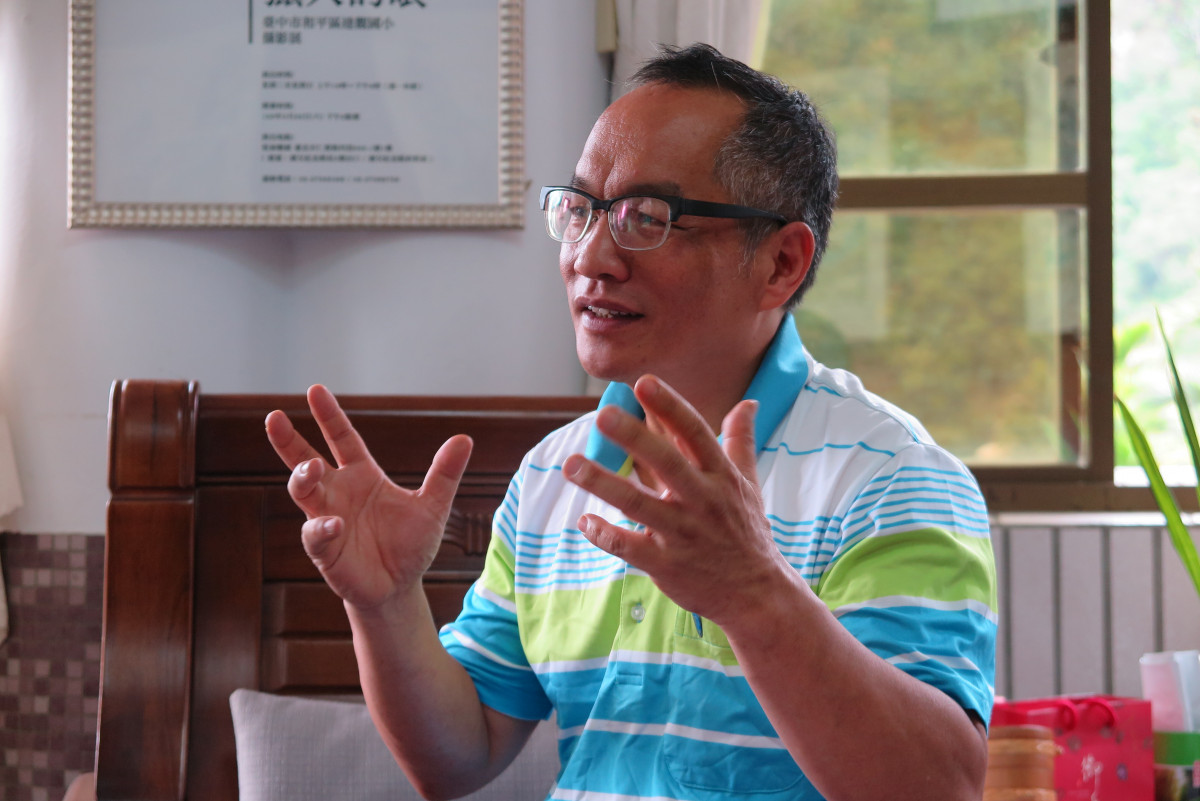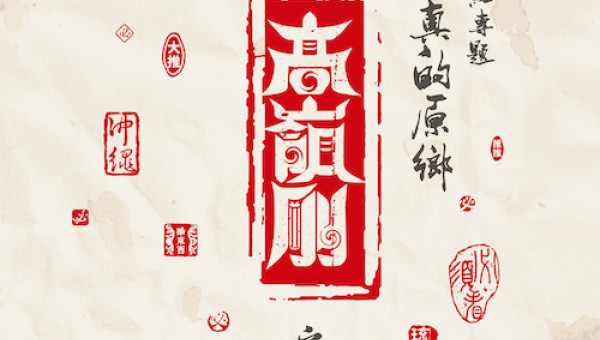Interview with Pilin Yapu for 2021 TIDF 'Taiwan Spectrum'
2021/08/06 19:40

What was your motivation for participating in the Full Shot Foundation’s Local Documentary Filmmakers Training Scheme in 1996?
In 1990, Yuma Taru and I established the Atayal Liyung Peynux Cultural Association. We did research respectively: Yuma focused on Atayal weaving, I did tribal history, and the priest on Atayal language. The priest is an American and at a time when most missionaries preached in Chinese, he spoke Atayal language, even giving many children their tribal names and creating multiple connections between Atayal culture and the Catholic Church. Later, we held a Mini-Atayal Culture Camp and bought a V8 camera to play around with, our first shootings were very amateur, like home videos. At the time we were yet to make the link to documentary film, cultural revival or education.
Someone brought a sign-up form for the Full Shot’s training programme. We had to fill in self-introductions, etc. Both myself and Baunay Watan registered. Computers were scarce in our mountain community, so I just filled in the A4 paper in handwriting and faxed it over. From that random chance, Baunay and I started learning how to use cameras. So in reality, I didn’t enter with a particular motivation, just wanted to learn some skills so I could film the people of my community, and that went on for more than two decades.
What was the major influence of the Full Shot’s training programme?
They screened many foreign documentary films and invited community development workers from domestic projects. The teachers would share with us many of the issues they encountered, be they domestic or foreign, relating to minority or mainstream society. They would engage in social movements through their films, transforming a tribe or community. It was then that I realized just how much you could do with documentary films. I was inspired in many ways beyond purely technical learnings.
I learned the meaning of the word ‘practice’. I went from written to visual documentation. Asking questions to the elders while filming allowed me to learn about Atayal culture and the importance of the concept of 'gaga', an integrated life philosophy, worldview and ancestor worship system that I saw, documented and implemented in my own daily life. As an education worker, it is important for me to pass on the heritage of ‘gaga’, to let the children see its advantages, to teach about it in our curriculum and to keep using it in our daily lives. In other words, to practice it. There are various levels to my use of the word practice; one is to practice it within my daily life, another is that it could keep being practiced by those I could influence. The Full Shot training programme helped me recognise the importance of this practice and provided many tools to achieve the implementation. It was then that I realized the most challenging thing you will encounter in filmmaking is yourself. Whether or not you are able, willing and dare to get things done is all down to yourself, both during shooting and even more so during editing. I would understand myself more profoundly, what my bottom lines are but also where I could have gone further.
How one tells the story is also very important, the same incidents could be expressed in many different ways. I don't like to be too imposing and direct, as I find this hurts people. By protecting your subjects through indirect expressions, you could actually make the viewers realize the key issues more.
What led you to explore the main theme in Tales of the Rainbow (1998) ?
Back then the media would visit the mountain villages, got the images they wanted and left. They would maintain no contact with the people here afterwards, and we never knew how they would portray us. When showing Indigenous peoples, the media tended to use mockery and wouldn't let the Indigenous peoples speak, the power of interpretation was completely in the hands of the presenter. Is that really the best the media can do? Can’t Indigenous peoples speak for themselves? Facial tattoo is very important in Atayal culture, I wanted to ask the elders to explain, in their own words, what it meant and their perspective on it. My idea was very simple, I wanted Indigenous peoples to tell our story in the first person perspective, not being interpreted by others.
In fact, I've re-edited many versions and I am still filming. I want to make it more watchable and to probe deeper. Adding layer after layer, like an oil painting. But now I'm too busy, camera image quality has changed too much and there are no the elders left to film as well.
Tell us about why you show your subjects what you shot or edited before finalizing the film.
That's my respect for the subjects. It is a key principle to build mutual trust by explaining the purpose of the film before shooting. I would show them the footage during shooting or editing to make sure that the film expresses what they wish to say. After watching a few times, they would be able to speak more completely and clearly. When making a film, I hope I could complete the film with my subjects instead of just me alone. My knowledge is very limited. No matter how much field research I do and how much I read, it’s only a small portion of their lives. Things can only be richer with their participation and stories of their lives.
What motivates you to continue making documentaries? Do you see documentaries as a tool?
Essays only lie in libraries after completion. But if you show Indigenous peoples images, they can actually relate better to it and generate more responses. Generally, the power of image is much stronger than that of words, especially to the Indigenous peoples living in the mountains.
For example, I have shown Come Closer to the Ancestral Spirits (2002) over 200 times in indigenous communities and now all the tribes along the Da’an River are promoting a revival of ancestral ritual. People start talking about the importance of the rituals, and holding their own ancestral ceremonies on family, community or regional level. Nowadays you can also find plenty of information related to ancestral rituals on the Internet, this means the tradition goes on rolling again, unlike how it used to be. In this light, changes started to take place simply through the screenings and sharing for documentary films.
But while showing that film around, I also received intense criticism. I didn’t leave my house for two weeks as I tried to figure out what was wrong. I realized that I had been identifying with my home village, Mapihaw, and thereby making it the benchmark for the whole of the Atayal people. This viewpoint was wrong. I needed to identify firstly as an Atayal and look at ancestor rituals from a holistic Atayal perspective, not just that of one village. It was an awakening. I spent the next two weeks editing a new version before I set off again. This experience was my toughest, it unblocked me and expanded my horizons.
While producing Where Has the Land Gone? (1997) I also had high intentions of raising the awareness of land-ownership of all Indigenous peoples. I think it somehow does have influence. At least it's been screened and discussed at several conferences and universities, especially on the occasions Indigenous peoples attended. I viewed it as a seed, I didn’t know how it would grow.
When showing Tales of the Rainbow (1998/2008), often people would say this reminds them of their grandmas or that they wanted to return home to do something for communities. If out of every hundred people who watched my film, two or three of them were profoundly moved by it, then that would be enough for me, the film achieved its objectives.
Mayaw Biho's documentaries are included in this programme as well. He once said that making documentaries is useless, so he switched to running in legislative elections and starting a school. You have always been a teacher within the system and have mentioned the instrumentality of documentary film. Do you think documentaries are useful? For example, within the education system?
Documentary film can change the way we think, it is a seed. If you want an immediate change or to formulate policies, then you need to run for legislative power, like Mayaw. Within the education system I am always practicing Atayal culture. Through field research and shooting documentaries, I find the core values of the Atayal's tradition. In my working field, I try to maximize what I know and pass it on to the students. During six years of study, I hope they could practice Atayal culture within their own lives in the future. That’s education and that’s what I’ve always been doing.
I hope that experimental education can change the future of Indigenous peoples’ education in Taiwan and this ambition comes from my experience in making documentaries: Documentaries prompt changes, it‘s a movement. It also influences how I promote indigenous peoples’ experimental education, trying to put the same principles into practice as they are all part of the same overall context. I think Mayaw is also heading the same direction, it's just he is always changing his approach.
Do you have an opinion on “who can film Indigenous peoples”?
Everyone can film. I look forward to more Han Chinese joining to improve diversity. But those who come to film must have a deep understanding of indigenous culture, and be able to approach from an indigenous context and angle. With these fundamentals, anyone can film.
From an Atayal standpoint, when interpreting us, it is critical that you first understand the concept of ‘gaga’, which is the Atayal culture, traditions and customs as the basis for analyzing and conducting interviews. Of course you can’t be expected to know everything in great depth, but at least you should have done your homework. There are many aspects of this homework, coming from a cultural perspective will reduce the level of bias.
Taking ‘money’ as an example, most media will describe Indigenous peoples as disinclined to save money and enjoying the present. Yet, from a cultural perspective, Indigenous peoples have not been using currency for more than fifty years, while Han Chinese have over a thousand years of experience with currency, therefore they have a deep-rooted understanding of how the money mechanism operates. If Indigenous peoples don't save money, it relates to the environment and background. In the mountains, when you have a successful hunt, you share the food, even if you encounter someone as you are descending the mountain, you will cut them a leg from your catch. Therefore, if you do your homework, you will not say that Indigenous peoples are wasteful and can’t save money.
Are you still filming? What topics are you focused on recently?
Recently I've been shooting the development of P'uma, the experimental indigenous elementary school. I hope to make a documentary showing a whole new different education model and let more people understand the importance of indigenous education and indigenous subjectivity in education.
Date: May 8th, 2020
Place: P’uma Elementary School, Taichung City
Interviewers & Editors: Frances Tz-in LIN, TSAI Feng-chien


